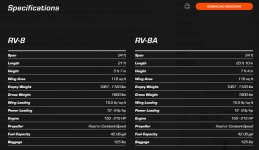FlyingFwyFreeman
Member
I'm still learning my 2007 model. Listed in the POH, the Gross Weight is 2270 pounds (Normal Category). It also says 6 G's 1600 pounds and 5 G's 1800 pounds. Would I be legal to fly above 1800 lbs as long as the CG is not aft of 86.82 inches and limit the G's to 3.8 (the old Normal Category limit)? I have an AeroSport IO-390, 210 HP, CS prop. I just weighed it and it's 24 pounds heavier than in 2007. It was already on the heavy side, and now 1254 lbs.


